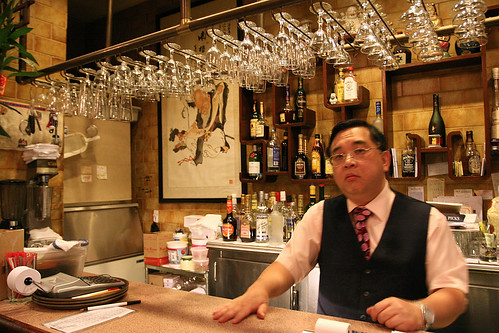There is a never-ending list of restaurants that specialize in either breakfast or dinner, but finding a unique lunch experience can be difficult. The solution to some midday meal problems may lay in Chinatown, where hungry lunch-goers can partake in the “dim sum” tradition.
Dim sum is an ancient Chinese style of dining. Its name means “touching your heart” and the tradition is meant to be practiced with a group of family or friends. Contrary to the Western tradition of ordering a meal in a restaurant, dim sum requires no menu. Customers first select a tea, and then choose from a variety of dishes on carts that are pushed around the room by servers.
The platters offered are small, generally four to six pieces, and can be served on plates or bamboo and metal steamers. It’s a tradition similar to the Western buffet – but without the hassle of walking.
According to the official Philadelphia Chinatown Web site, dim sum foods have color, fragrance, taste and shape. They are served in four different categories: steamed dishes, variety group, deep-fried items and sweet items. Customers are given a wide selection to choose from so that they can sample different types of Chinese cuisine.
It should also be noted that when customers have emptied their teapot, they simply need to take off the lid and place it on the table for a refill. There’s no need to call for severs because they can spot an uncovered teakettle from a mile away.
By visiting the various restaurants in Chinatown that practice dim sum, diners are given the opportunity to try new types of food while spending time with the people they love.
Joy Tsin Lau
Walking up to Joy Tsin Lau, customers will feel as though they have left Philadelphia and flown around the world. A towering, pagoda-like entrance complete with sculptured cement lions and lanterns welcomes guests inside. The authentic interior makes customers eager to sample Joy Tsin Lau’s cuisine. Guests sit in a room colored brilliantly in red and gold and dine with Buddha. It wouldn’t be surprising if a giant paper dragon came out and danced around the room at any moment.
When the dim sum cart rolls by, grab some shu my (pork dumplings) and cheung fun (rice noodle rolls). These selections are on the safe side and should satisfy most picky eaters. Customers should also try the sticky rice, which is made with egg yolk and meat. For dessert, sample the egg custard tart, a sweet way to end a meal.
Imperial Inn
Customers looking for a more intimate dining experience should head to Chinatown’s famed Imperial Inn, where dim sum is served daily. The dining room is simple and relaxing, putting customers at ease with scattered red lanterns and pictures of the Chinese countryside hanging around the wood-paneled room.
Char siu bao is a bun filled with barbecued pork and is highly recommended. Those drinking the tea should be careful, as it can be slightly bitter. Truly brave souls can indulge their sense of adventure by sampling a serving of fried chicken feet.
Ocean Harbor Restaurant
The Ocean Harbor Restaurant, located across the street from Joy Tsin Lau, is for the customer looking for a more upbeat restaurant. Diners are seated in a wide open, brightly-lit area. The service is slow, which is ideal for dim sum, because it gives guests plenty of time to chat.
Ocean Harbor manager Jeff Wond said guests are generally on the younger side and usually aren’t more than 30 years old. Since the restaurant is designed to house large groups, it is a popular Chinatown haunt for college students.
Diners who aren’t put off by the long wait for food should try some of Ocean Harbor’s seafood dishes, such as the shark fin soup and, once again, the fried chicken feet.
Wond recommended eating dim sum during lunch hours and not during dinnertime. For guests with a long afternoon to whittle away, Ocean Harbor is an excellent choice.
Customers in a rush should head to Ocean Harbor’s sister restaurant, H.K. Golden Phoenix, which is located at the other end of the street. H.K. Golden Phoenix is a another seafood-dominated restaurant, which is clear from both the smell and tanks of lobsters and crabs that line the wall of the lobby. Enter at your own risk.
Frances McInerney can be reached at frances.mcinerney@temple.edu.


